Gunshot wounds are extremely traumatic and painful for the injured person. While there are ways for you to stabilize the injured person, they still need to get to a hospital as quickly as possible. If you have a first-aid kit and know how to treat a gunshot wound you can do so immediately when you find the injured person. You may not be able to assess how much damage has been done, but controlling the bleeding may be the difference between life and death for the victim.
[the_ad_placement id=”in-text-1-type-a”]In the meantime, there are steps you can perform to ensure that you give the victim as much care and attention as you possibly can. It is vital that you act no later than 10 minutes after the gunshot itself. There are different gunshot wounds depending on where the person is hit, e.g. the head, abdomen or limbs (legs or arms). For these different areas, different procedures are needed and you must not mix one treatment for a different wound, or there is a risk to worsen the victim’s condition.
How the damage occurs
Before we get to explaining how to treat a gunshot wound we need to look a bit closer to how the damage occurs in the first place. First of all let’s take a look what a bullet looks like. It’s a small casing, which contains powder charge. As a person shots the bullet, it will fly at an incredible speed – about 1500 meters per second – the speed varies and depends on the actual bullet, its weight and the gun it’s been shot from.
As the bullet hits a target, the powder charge explodes and damages everything nearby. Usually the upper body (head and abdomen) are most vulnerable, and if hit by a bullet, the person may suffer rapid blood loss and serious damage to internal and vital organs.
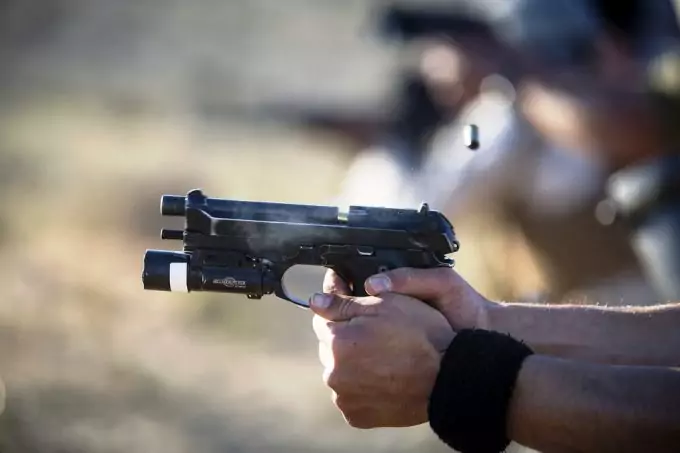
Let’s look even closer to how much damage a gunshot bullet can cause. As the bullet penetrates the body, it will start tearing tissue, muscles and other body structures along its path. Some non-elastic tissues like the brain may suffer more, since they can’t recoil back, like other tissues (skin for example) can. Usually, a ‘cavity’ appears at the injured place, which can’t be repaired and the wound is opened to infection and high risk of blood loss. In some cases a bullet may penetrate the body on one side and leave it on the other, which may even further progress the loss of blood.
The result of a gunshot wound may be various but most often the injuries are the following:
- Heavy bleeding/blood loss
- Injury to vital organs
- Broken bones
- Infection
- Paralysis
- Death
Usually surgery is necessary to remove the bullet’s pieces and if there are broken bones, the bones’ pieces must also be removed, since they can severely damage nearby tissues and/or organs. Also, the wound must be washed, disinfected and sewn.
Treating a gunshot wound
Before you begin treating the wound you need to assess the severity of the damage. You have to look for the bullet and even may have to remove it, so you can safely clean the wound. If the bullet remains in the wound an infection may progress and make the victim’s condition far worse.
In other cases, there may be small shards from the bullet that have remained around the wound, but it may cause more damage by trying to remove them, rather than if you just leave them there. If you’re in the surgery and medical personnel can do the operation, then they can also remove all pieces from the wound.
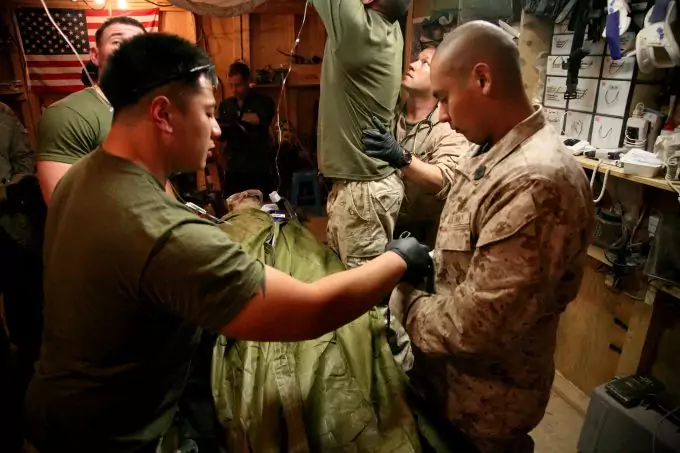
If you’re somewhere in the wild, and far from a hospital or the emergency, you should at least try to remove the larger pieces of the bullet, so you can clean and disinfect the wound. You have to bandage the wound and make sure you have stopped the bleeding, before you can find a hospital. You must change the bandage regularly and keep it clean all the time, so you can prevent infection. This may be your main concern. If you managed to control the bleeding, then the next threat to you is infection. In order to perform all these, you will have to have a well-equipped first-aid kit (we have a great set of reviews here).
If you have antibiotics, by all means, take some. They will prevent the progress of any infection, which may have started as you got wounded. Also, don’t hesitate to take any painkillers (if you have any). They will subdue the pain and will keep you sane and focused to find your way to civilization so you can get adequate help. If you don’t know how to determine if a wound or cut is infected, take a look at our article on how to tell if infection occurred.
And here is another important thing, which may help you. Depending on where you got shot, you have to keep the wound higher in elevation from the heart. For example, if you got shot in the leg, the best thing to do is to prop the leg slightly elevated, above the heart level. This will prevent from blood surging into your leg and causing too much swelling.
If someone else (your camping/hiking companion, friend or relative) got shot you will have to treat them yourself, before you can get to a hospital. Your first 5 actions are the so-called ‘A, B, C, D, E’. Here is what they mean:
- Airway (A) – This is one of the most important things you must check first, meaning, can the person still breathe. If they are conscious and can speak, and don’t seem to struggle breathing, then they are fine, and the airway passage is clean. In the cases when the person is unconscious you have to assess if they can breathe or if the airway passage is obstructed somehow.
Check their throat by opening their mouth and see if there’s something blocking the airway passage. If the tongue is in the way, try to remove if from the way. It is often possible that the shock caused the person to literally swallow their tongue, which causes them to suffocate. If the tongue isn’t in the way, then maybe there’s blood accumulated in the throat (if for example the person was shot in the lungs, throat or other vital organs damaging the lungs).
Try to remove the accumulated blood, by either turning the person around so the blood seeps out of the mouth, or you can soak it up with a piece of cloth. - Breathing (B) – If you successfully performed the above, then you probably have already determined if the person can breathe or not. If for example, there haven’t been any airway passage obstruction and yet the person in unconscious, there is a chance that maybe they don’t breathe. You may have to perform mouth-to-mouth to make the person breathe again.
Always check if the chest is rising or falling (a good indication for breathing). Also, don’t ignore factors like weird, rapid or in any way unnatural breathing the person has, even if they are conscious. There is a chance that something is going on and you must be alert of any changes in the victim’s behavior. - Circulation (C) – This is related to the blood circulation and to what extend it may cause serious blood loss. You must apply pressure on the wound so you can minimize as much as you can any further blood loss, which may occur. Also, check regularly the victim’s pulse, either at the wrist, or the throat. If the person is unconscious, and they don’t have a pulse you may have to perform CPR (rescue breathing).
- Disability/Deformity (D) – This check is important before moving on to helping the victim. What this means is that if the person has an injury to the spinal cord (disability), and you try to move them, position them somehow different from how you found them, could potentially make their situation worse, to the extent that they remain permanently disabled.
By deformity we mean that the person may suffer an injury, which somehow deforms their body in an unnatural way (strangely broken limbs, joints, etc). These are closely related to the nervous system and any movement may cause even more damage. This is why it is so vital that you first assess these before you proceed to any action.
Usually the Red Cross advises that, if a person suffers from a spinal cord injury, they should not be moved until help comes, or if you have to move them to help them breathe for example, you have to be extra careful and move them very slowly. But this is only in extreme situations where a person doesn’t breathe. Helping them breathe is of top priority. - Exposure (E) – It is also important that you find all the bullet wounds that you can, including any possible exit wound. You may have to look even the armpits and other such difficult to access areas. You are not advised though to completely undress the injured person, as this may cause shock for them.
How to properly treat different parts of the victim’s body
After you’ve assessed the victim’s condition, you have to prioritize your actions. If the wound is severe and bleeds a lot, you must immediately find a way to stop the bleeding. The first thing to do is to apply pressure directly over the wound. You could use pads, clothing or even your fingers to apply pressure and try to control the heavy bleeding. Find clean pieces of cloth and bandage the wound. Use as much clothing as you can find, but make sure they are clean, or you may expose the victim to infection.
If any limb has been shot (arm, leg or thigh) you could apply pressure to specific areas near the wounds. For example, if the person is shot in the arm, you could press the area of the armpit, since there is an artery there and it leads directly to the heart. If you press that artery, less blood will be pumped by the heart to the arm and as a result the blood loss will be reduced. If you have some paracord around, you can use it to create a rudimentary tourniquet. If you don’t know how, take a look at our tutorial here.
The same applies to injuries on the legs or thighs. There is a similar artery near the bikini area, so you can press that area. It is possible that you can even feel the pulse there. Press the artery and the blood loss should diminish somewhat.
[the_ad_placement id=”in-text-2-type-a”]In cases when the gunshot wound is in the abdomen (torso) area, and vital organs may be damaged, it is usually difficult to do anything for the person, without special medical attention. Yet, some commercial products like QuikClot and Celox could help in a way. The principle behind these products is that they increase the blood clotting extremely quickly and could be helpful in severe cases.
For example, QuikClot contains kaolin, which is a potent chemical, accelerating the blood clotting. Celox works on the same principle and could be applied as a gauze, and claim that it’s possible to stop the bleeding within no more than 5 minutes of applying pressure to the open wound.
These products are mostly manufactured for the military, but they are open to purchasing to the general public. For example, you could purchase several Celox gauze and carry them always in your backpack as a life-saving measure in case an incident happens.

You are often advised to get to know the instructions and read the manual for using, but it is often much simpler, and you have to simply apply the pad and hold it slightly pressed to the wound so that it can do its work. As we said, 5 minutes are enough to have significantly affected the blood loss.
Also, you have to be prepared that the victim may suffer shock. This is a traumatic event and it can affect the victim’s behavior. Not only that but the injury itself, pain and blood loss are also affecting factors and can lead to a state of shock. In order to help the victim as much as possible, try to keep them warm (if they feel cold to the skin) or try to fan them if they are hot and seem to have a fever (possibly an infection is going on).
If you have antibiotics, you should administer them to prevent the spread of the infection. And again, don’t attempt to elevate the legs, if the wound is on the abdomen/torso area. There is a risk that the person may begin to suffocate due to the blood accumulation in the torso area.
[the_ad_placement id=”in-text-3-type-a”]You need to be psychologically prepared that a gunshot wound in the head is in most cases fatal. There is little you can do. The only thing that is in your hands is to get the person to a hospital as soon as humanely possible, and also, try to keep the head upright. If the head is positioned horizontally it may more rapidly fill with blood and thus the brain may swell and even if the person was still alive, an infection and brain swelling can kill them much more quickly.
Areas like the face and neck tend to bleed profusely. The victim can lose significant amount of blood within less than a minute or two and if you don’t apply pressure immediately, the end can be fatal. The only thing to consider when applying pressure to the neck is that you don’t press the carotid arteries. They are the passage for blood to the brain and if you press these arteries, the brain will end up being oxygen deficient and you may cause even more damage to the person (leading to coma or brain death).
Another thing to consider is wounds to the chest and back. You must be prepared that these area also hard to treat, since the rib cage obstructs the access to the actual wound. Sometimes, lungs may be punctured by the gunshot and as the person breathes in and out, they may draw blood in the lungs (and can literally drown in their own blood). This is called ‘sucking chest wound’. To prevent that from happening, you should try to tightly seal the lung wound with a plastic or an airtight bandage.
As you apply it, press the bandage on three sides around the wound, but leave the fourth side open, so that you can allow the chest to have its negative pressure. The idea is that as the person inhales, the air will escape from the fourth opening/valve, and no blood will enter the wound.
Final tips on treating a wound
As you manage to get the victim to the emergency, you must tell them exactly what you did so far to stabilize the person. Also, you must remember that pressure is the major key factor to keeping a person alive as long as possible.
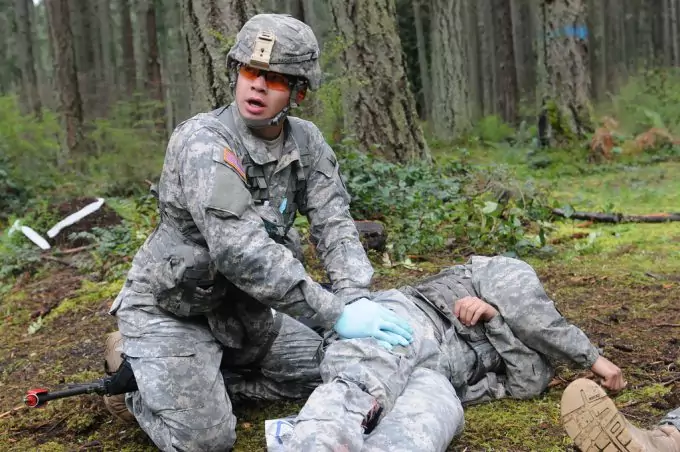
When it comes to spinal cord injuries, as we said, move slowly, and also, try to keep the neck, head and back in one line (aligned). This will ensure that there is no further damage to any nerves.
Keep in mind that, even if you can control the outer wound, there may be internal bleeding. You may not be able to do much about that, and it may be the thing which worsens the victim’s condition. So, even if you managed to successfully treat the exit/enter wounds, the internal damage may be far more severe.
And finally, as we said, it is possible that a gunshot wound be fatal for the victim. Do not risk your own life. As long as you are safe, you can proceed to helping the victim. If you are the injured person and you’re conscious you can apply the above advice.

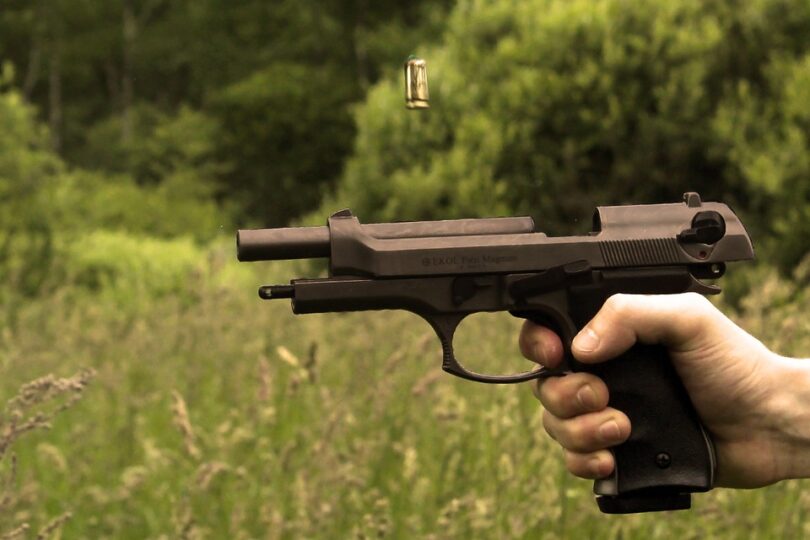


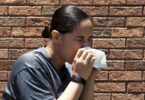

I’m a United States Navy Corpsman (Combat Medic) and EMT for eight years, done two deployments to Iraq and Afghanistan, have worked in 5 Emergency Rooms and have treated thousands of trauma patients.
I always carry a first aid kit with me in my everyday life and I’ve been taught to improvise everyday items for use in medical treatment.
I’m a Corpsman, and we are ready for war. War is dirty therefore we coined the term “Dirty Medicine.” There is a program in the Navy called Tactical Combat Casualty Care. (TCCC) it covers the identification and treatment of the three biggest killers on the combat zone. They are severe lung damage, tension pneumothorax, and massive bleeding.
If you’re interested in these subjects, research. This program started in 2007 and was created based on experiences from the wars in Iraq and Afghanistan. It has saved the lives of thousands of wounded warriors.
Thank you for sharing this information Wayne. I do agree that these three that you speak of can be dangerous and will be fatal if not addressed quickly.
Nora
When it comes to gun shot wounds, stab wounds or anything that causes bleeding, I agree that the first important thing to do is to apply pressure (after calling for 911 of course). If you run out of clean materials to stop the bleeding with or if you’re outdoors, I’ve heard of tampons and sanitary napkins being highly recommended. Most women (and some men even) always have them at their disposal and they make good dressings because they’re sterile and highly absorbent.
The most important things that you should remember when treating a gunshot wound are: stop major bleeding; treat for shock; clean the wound; apply a pressure bandage directly over the wound; and remove the tourniquet. Our article provides you with more detailed information.
Thanks for the article! I still have one question in my mind: if a person has been shot in the throat, and is bleeding profusely through the throat and the mouth, and at the same time does not have a pulse, should one try to stop the bleeding first, or do CPR first?
This is the thing with a gun or a knife wound. You never know when a person will shoot or harm you. This is why knowledge, such as this should be learned by all people. These things should be taught in schools because a shot person may die of bleeding while waiting for a 911 response.
The article seems extremely concerned with infections (which is important), but if someone is bleeding out and you have nothing sterile or even clean, pack the wound with whatever, because once you are at the hospital, they will administer antibiotics. I’ve heard military uses dirt if they have nothing else because it doesn’t matter if the wound stays “sterile” if they die from the hemorrhage. Still a great article though.
Everyone has seen a gun shot wound in the movies, and a few of us in real life situations. However, knowing how to treat a gun shot wound is crucial. You might need your skills one day to help a person in need as you wait for EMT.
Thank you for your contributions, Anthony. Well, it is always advisable to have a plan B, and I suppose what the surroundings can offer matter a lot when dealing with a gun shot wound, and you have no real medical kit with you.
Well, a throat gun shot is one of the hardest injuries to handle, especially if you have no medical skills. However, you should secure the trachea to make sure there is a patent airway; breathe for the patient; then address the bleeding as you call 911.
Thanks for your answer, Nora. I am sorry, but what exactly does “secure the trachea to make sure there is a patent airway” mean? (Yes, I have zero medical skills and that extends to medical vocabulary :D )
I love how this article is written. It does not only tell you on how to treat gunshot wounds but tell you how the damage occurs first. It also tells the step-by-step process on how to treat wounds on different parts of the body.
This is a very important thing to learn and understand. Some of the basics taught in this article can also be used on different wounds that are bleeding. The first step should always be to assess the degree of the wound and help the blood to clot and stop it from bleeding.
Gunshot wounds are one of the most traumatic injuries you can encounter, but knowing how to administer basic first can actually save a victim’s life. You never know, the victim might be your relative, and the EMTs are more than 10 minutes away.
Most of us have encountered multiple gunshot wounds in the movies, but you never know when you will actually encounter one in real life. Therefore, understanding the basics is very crucial, and this article will definitely equip you with all the necessary basics you might need.
This is exactly what a patent airway mean, “Maintenance of patent airway Airway management is the medical process of ensuring there is an open pathway between a patient’s lungs and the outside world, as well as reducing the risk of aspiration (Google Search)”
Thanks again!
I am glad I could help. Make sure you get the skills right. You never know when you will encounter one and you are the immediate help the patient can rely on.